Attracting Winter Finches to your Backyard
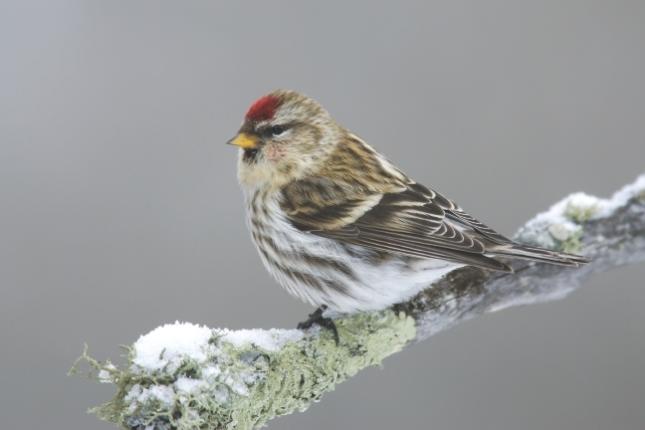 Common Redpolls are small finches with small, pointed, seed-eating bills. Adult males have a bright red crown and a pink wash on their chest, whereas females have a much smaller red patch on their crown. Both are heavily streaked.
Common Redpolls are small finches with small, pointed, seed-eating bills. Adult males have a bright red crown and a pink wash on their chest, whereas females have a much smaller red patch on their crown. Both are heavily streaked.
Hoary Redpolls are small finches with tiny bills. They differ from the Common in that they have far less streaking, but males have a similar red crown patch and a pink wash chest. Females are overall white with a small red crown patch.
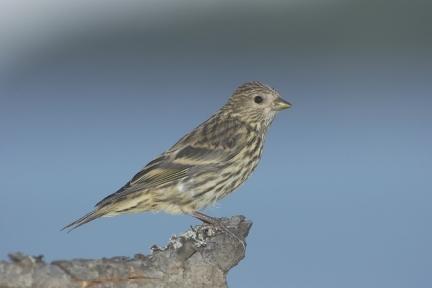 Pine Siskins might be visiting your yard but blending in! Watch your feeders closely and you may spot these little finches that can be mistaken for American Goldfinches in their winter plumage. They have subtle yellow edging on their wings and on their short, notched tails. One feature that sets them apart is their heavy streaking.
Pine Siskins might be visiting your yard but blending in! Watch your feeders closely and you may spot these little finches that can be mistaken for American Goldfinches in their winter plumage. They have subtle yellow edging on their wings and on their short, notched tails. One feature that sets them apart is their heavy streaking.
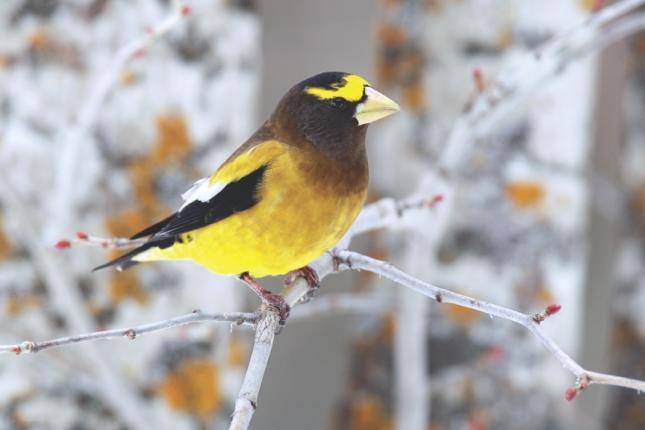 Evening Grosbeaks are larger and heavier set than the other winter finches and with a very thick bill. Adult males are black and yellow with a prominent white patch on their wings and a yellow stripe over their eyes. Females are mostly grey with black and white on their wings but do have a greenish-yellow tinge to their neck and flanks.
Evening Grosbeaks are larger and heavier set than the other winter finches and with a very thick bill. Adult males are black and yellow with a prominent white patch on their wings and a yellow stripe over their eyes. Females are mostly grey with black and white on their wings but do have a greenish-yellow tinge to their neck and flanks.
Food
Winter finches will eat an assortment of seeds. Offering Nyjer, our WBU Finch Blend, black oil sunflower, hulled sunflower chips, millet, or our No-Mess Blends will provide an abundant food source for when these flocks arrive for the winter.
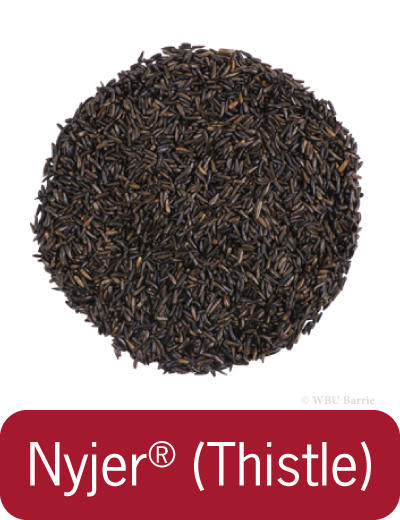


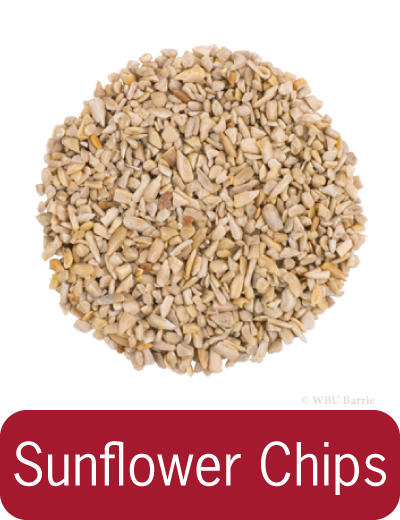
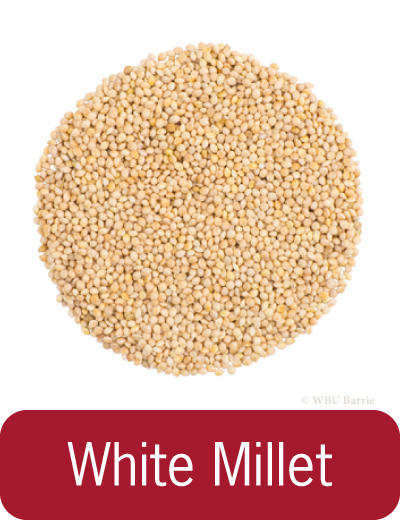

Feeders
You can find winter finches using a variety of feeders, including finch feeders—apart from the Evening Grosbeak whose bill is too large to access seed from the tiny ports of a finch feeder. Like many species of backyard birds, these birds are fond of tray feeders which give them an excellent vantage point to keep an eye out for predators while enjoying a meal. A hopper feeder, cylinders, and our Eliminator Squirrel Proof feeder are all great options as well.
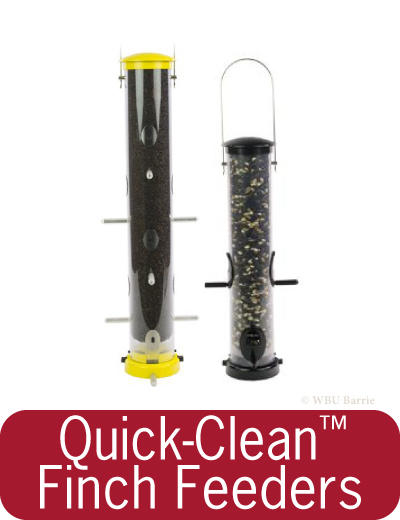
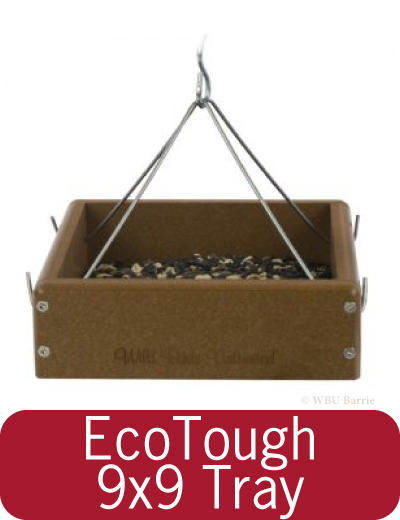
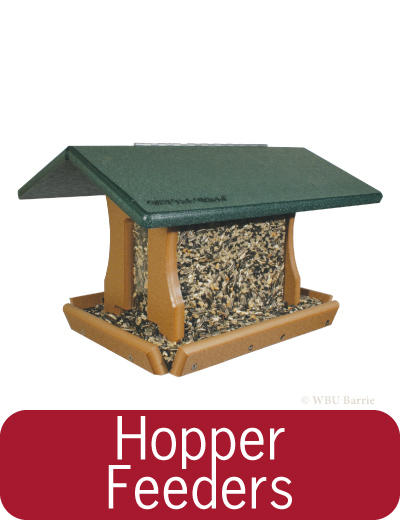
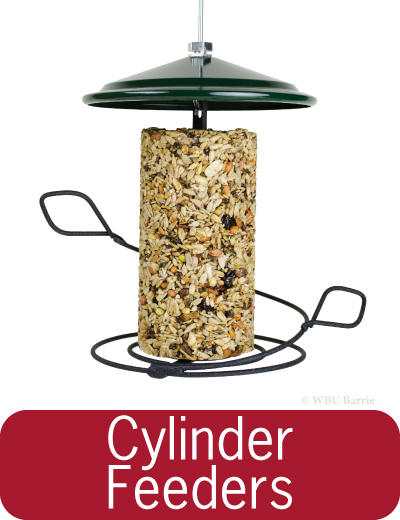
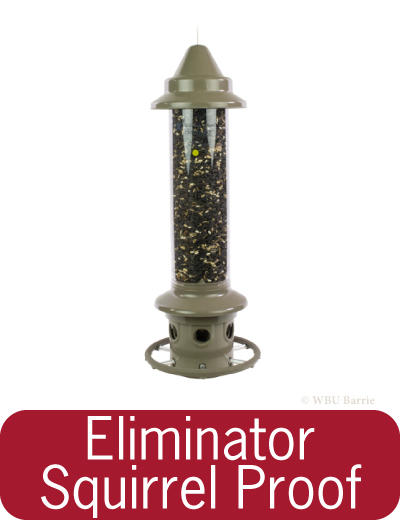
Do They Migrate?
Winter finches move according to availability of their food sources, so if there isn’t enough food up north then they’ll head south. Every few years we may experience a finch “irruption” during which large numbers of these winter finches can be expected in our region.
Nesting
Many of our winter finches are boreal species, meaning they live primarily in the boreal forest region, and migrate south to us when food is sparse further north. What this means is that contrary to what might come to mind when we think of nesting season—warmer weather, spring flowers blossoming--winter finches prefer to build their nests in the spruce and alders of the subarctic forests.
Birdbaths (Water)
Water is essential to all birds and providing a bird bath means they don’t have to travel great distances to find water. Water in a bird bath should be cleaned regularly as birds defecate, leave bits of food and feathers in the bath, not to mention leaves and other items that can end up in a bath. In the winter, heated birdbaths provide an excellent place for birds to drink. During the warmer months the WBU Water Wigglers and Solar Fountains create moving water in your birdbath, making the bath even more attractive to birds. WBU Barrie carries a variety of plastic, metal and clay birdbaths and accessories, as well as heated birdbaths for the colder months. Visit our page on birdbaths for a selection of styles as well as accessories like brushes, solar fountains, water wigglers and Fountain Fresh Water Clarifier.
Fun Facts
-
Common Redpolls will quickly gather numerous whole seeds and store them in an expandable section of their throat called the diverticulum. Once the have flown to the safety of dense cover they will regurgitate the whole seed, husk it and then re-swallow the nut meat. They will also fill the diverticulum with seed just before the onset of darkness in order to provide an extra source of energy to help them survive the night.
-
The Pine Siskin is the most common of the "winter finches" to be found at your feeders…but not every year. An “irruption” migration usually takes place every two or three years that can bring large numbers of Siskins to your backyard.
-
Pine Siskins, like most northern finches, are fond of salt. They seek out natural salt licks and in the winter they can be found along highways eating the salt used to melt ice and snow.
-
Evening Grosbeaks seem to delight in snipping off the twigs of Sugar Maple trees and sipping the sweet sap.
-
The Evening Grosbeak was named in 1825 based on erroneous accounts that they became vocal and active only “at the approach of night.” This erroneous belief persisted for years, and the name is still a misnomer.
Learn More
Visit the pages below to learn even more:
- Lab of Ornithology at Cornell - All About Birds - Common Redpoll
- Lab of Ornithology at Cornell - All About Birds - Hoary Redpoll
- Lab of Ornithology at Cornell - All About Birds - Pine Siskin
- Lab of Ornithology at Cornell - All About Birds - Evening Grosbeak

